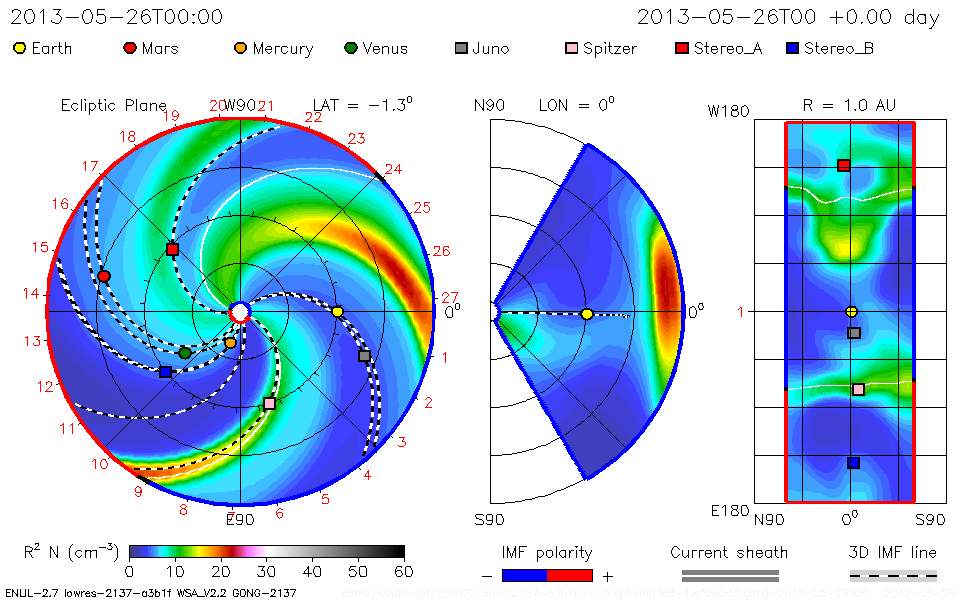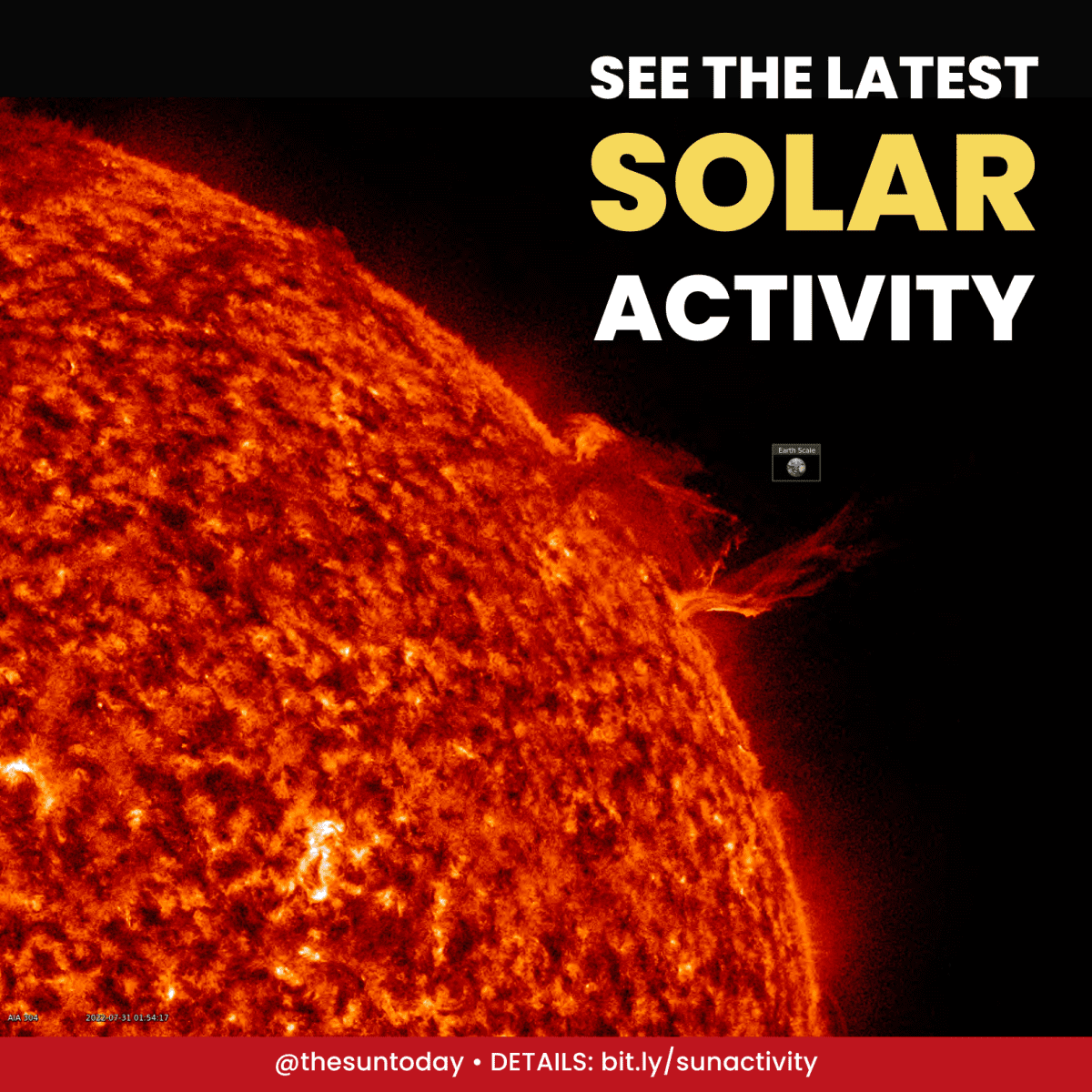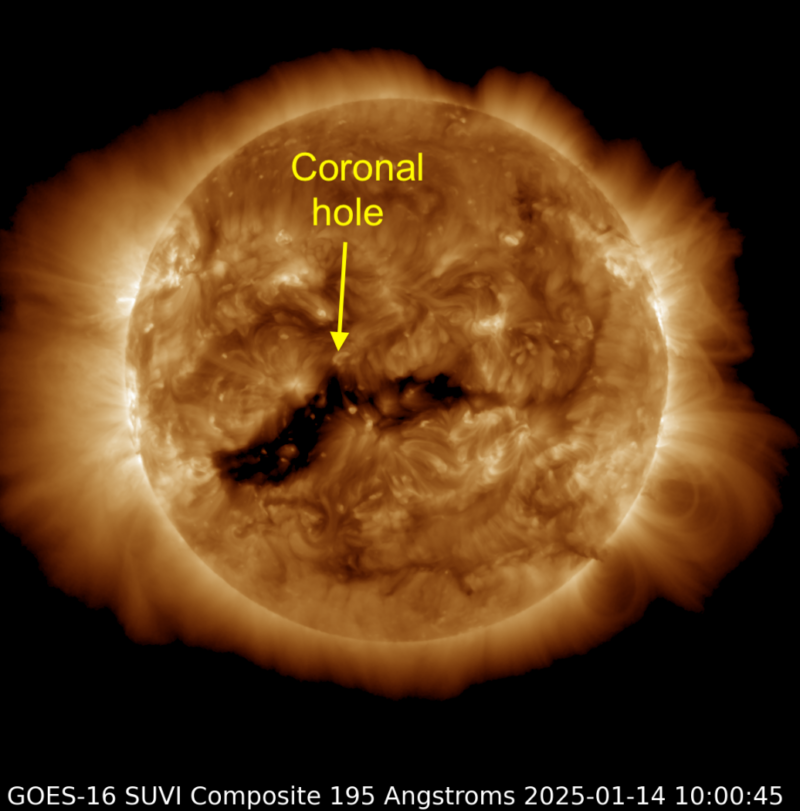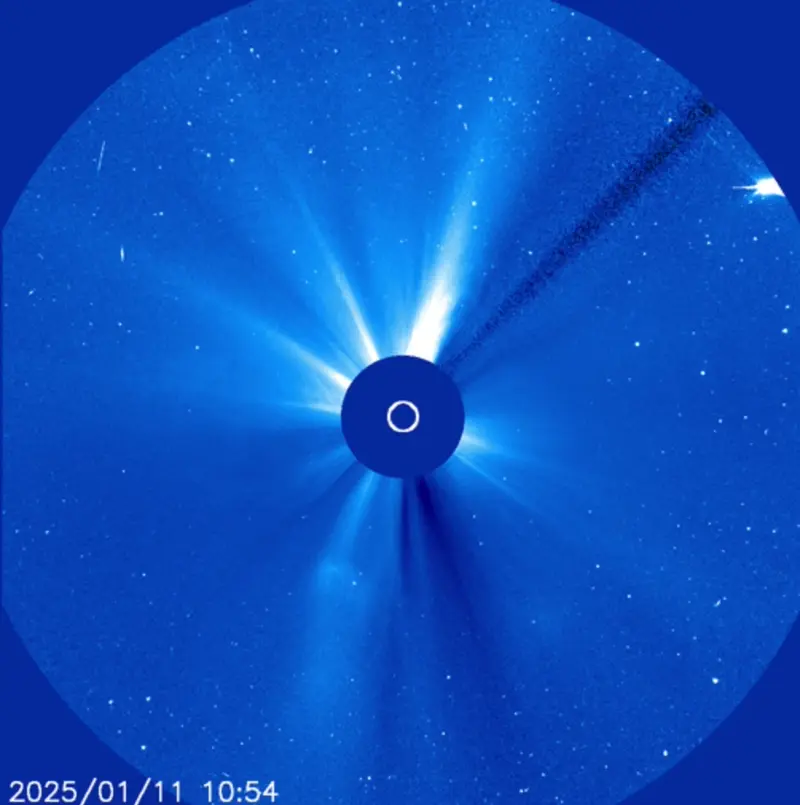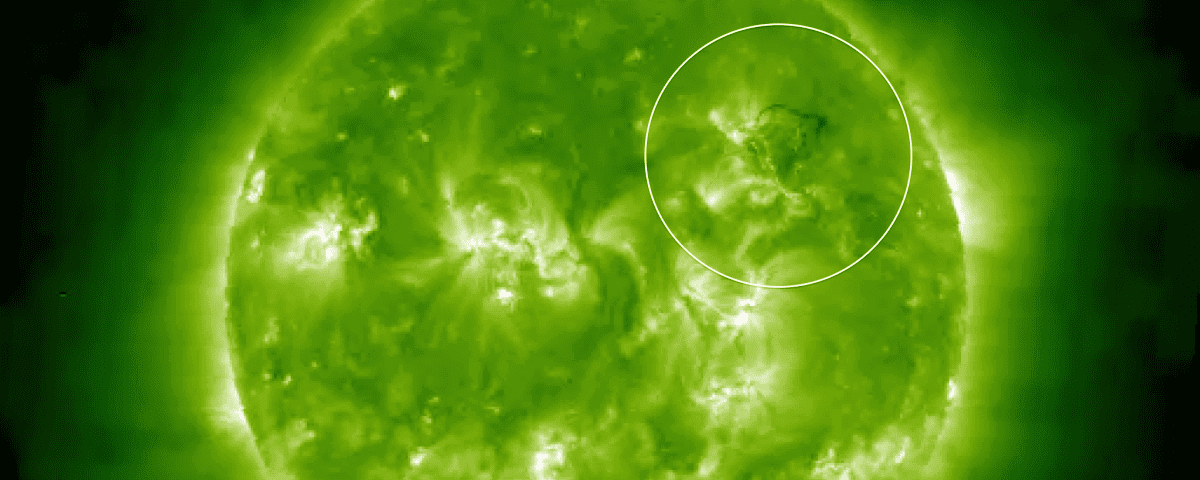
A filament erupted on the backside of the sun and was observed by the EUVI instrument on the STEREO Ahead spacecraft.
The eruption produced a CME detected by STEREO-A COR2, STEREO-B COR2 and SOHO LASCO C3 around 19:24 UT, May 26, 2013. NASA GSFC Space Weather Research Center estimated the speed at ~879 km/s.

These three images show a coronal mass ejection, or CME, erupting into space on May 26, 2013. The pictures were captured by the ESA/NASA Solar Heliospheric Observatory with its coronagraph, which blocks out the bright light of the sun to better see its dimmer atmosphere, the corona. Credit: ESA&NASA/SOHO (http://www.nasa.gov/mission_pages/sunearth/news/News052613-cme.html)
Based on computer modeling by the NASA GSFC Space Weather Research Center, it is estimated that the CME may impact Mars and STEREO A. Simulations indicate that the leading edge of the CME will reach Mars at 16:27 UT (+- 7 hours) on May 30, 2013 and STEREO A at 11:08 UT (+- 7 hours) on May 29, 2013. Spacecraft operators are aware of the event.
credit: NASA/ESA/SOHO, NASA/STEREO and NASA/SWRC



